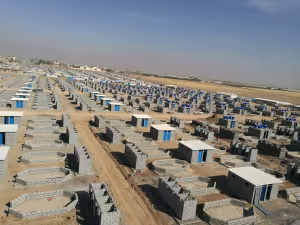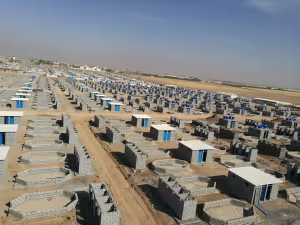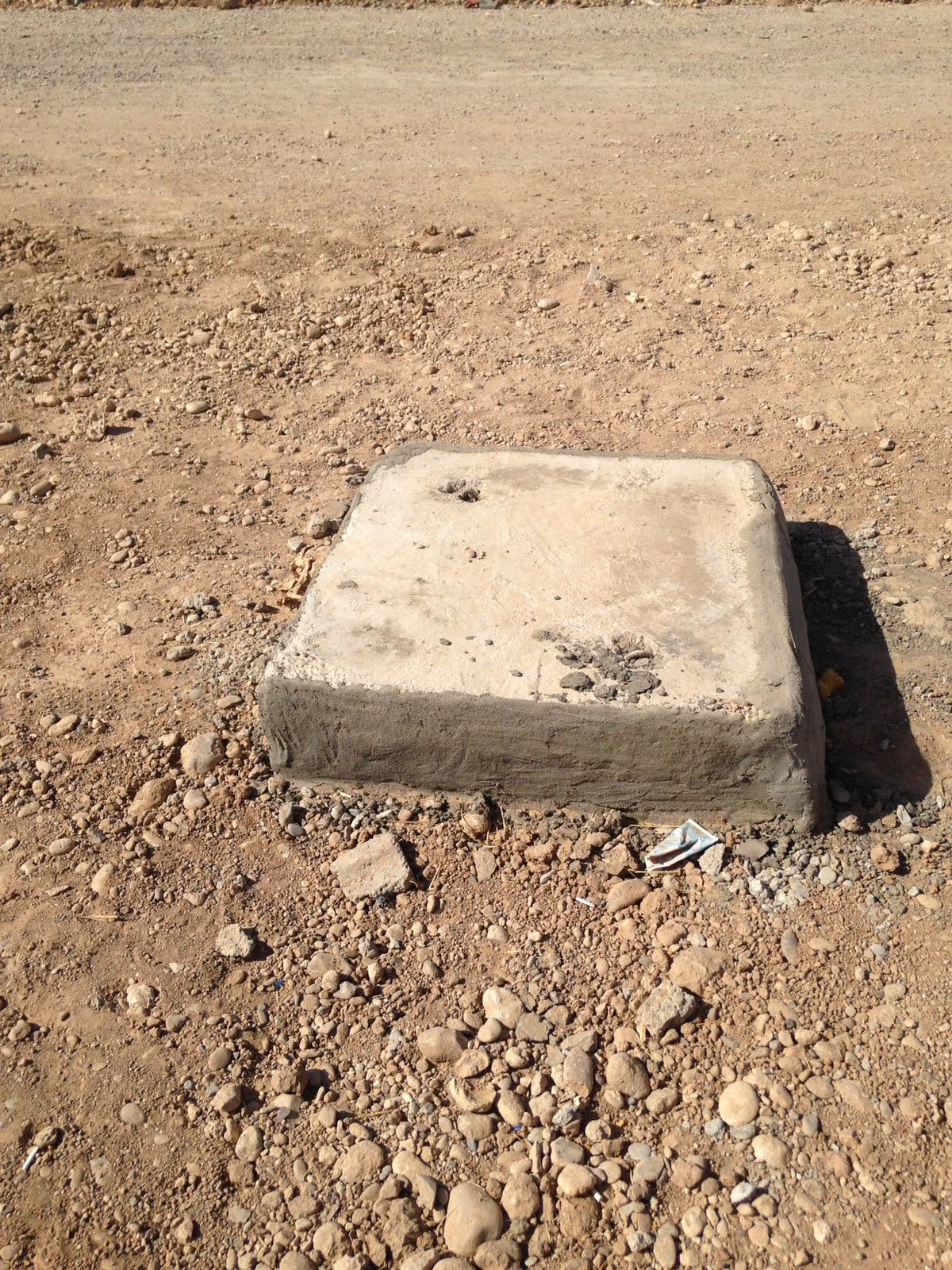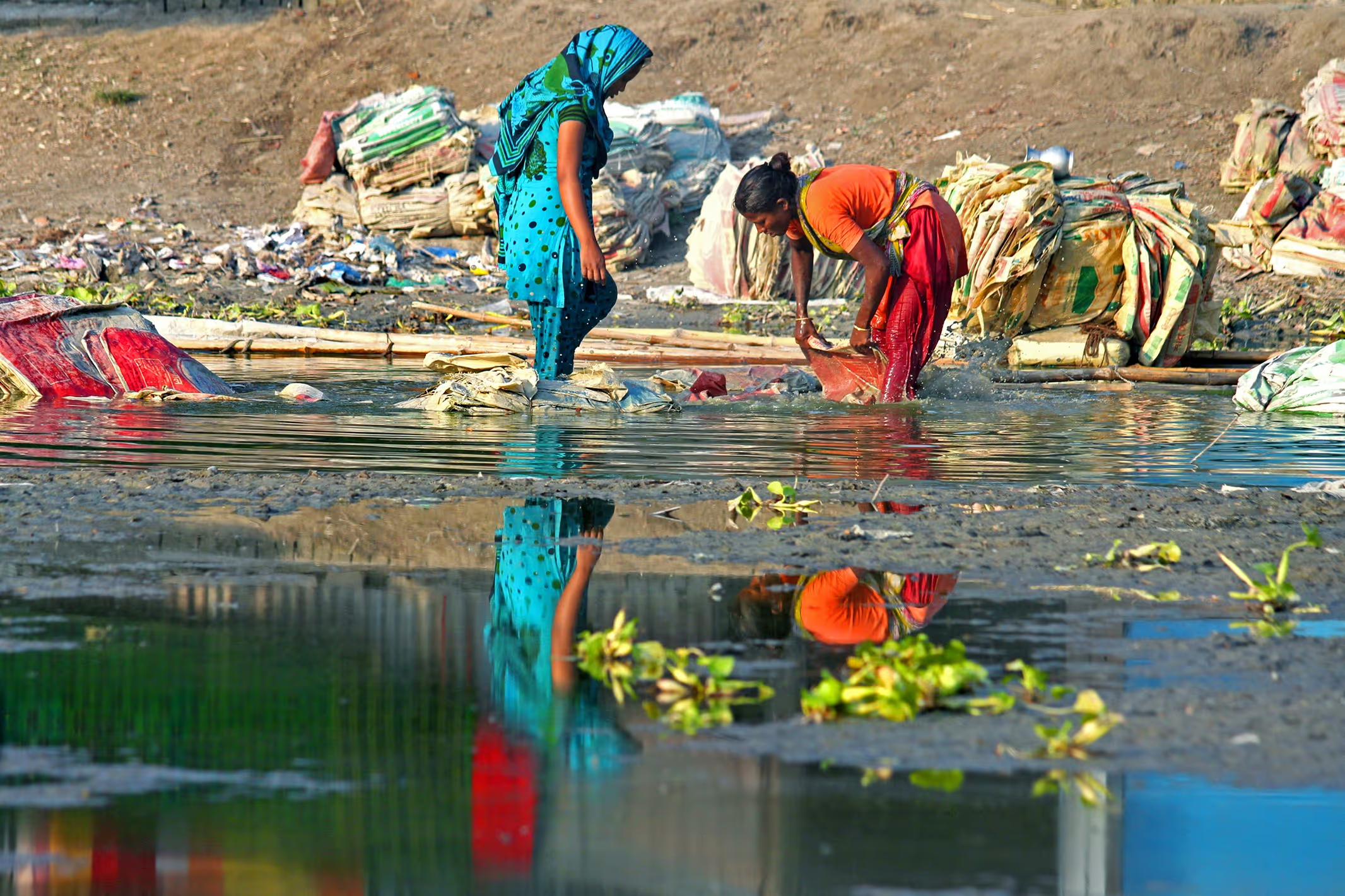UNHCR Camps‚ Erbil – Improved drainage or concrete jungles?

A visit to three camps with differing wastewater management practices in place, two interviews with UN agency specialists and a camp resident, set in me a comforting calm.
To begin, introducing my own Weltanschauung (worldview) is essential to a reader framing themselves in the context I am experiencing. I am from England, Leeds in particular.
My exposure to drainage, or rather awareness that there are drains all around me, down every street, resurfaces when it does just that, and appears on the news as flooding, or foul matter appearing from a manhole. Basically, my country, the local environmental law and governance structures, exist in a way that maintains a degree of order to this service, it is only when there is some lack of it, we find ourselves temporarily in a state of chaos.
But, what if this environment was constantly challenging, undergoing flux and disorder? How is drainage here best addressed and what does that look like?
Some previous blogs by our team described the camps and the wastewater management at these sites.
However, in my next two-part blog series, I want to frame how the WASH experts (UNHCR and UNICEF) and camp residents I interviewed combine drainage with WASH, and in doing so take away some learning points to enlighten, not only my own worldview, but yours too, about where the nexus exists in gaining support from every stakeholder involved, in possibly improving these systems. This piece covers refugee camps in the Kurdistan Region of Iraq, in particular, Dohuk and Erbil Governorates.

What my own worldview tells me, in reflection, is that drainage is an almost intangible service, put in place by a local management body or authority. We do not readily take heed of its existence, unless this service, suddenly appears on our doorstep. On occasion, this surface water is cross-contaminated by blackwater (sewage) and greywater (bathroom sinks, showers, tubs, and washing water), where systems are not designed properly and the propensity of cross-contamination increases.
Understanding how combining sustainable drainage (SuDS) with WASH is achieved within a challenging environment, like a refugee or IDP camp, seemed to make most sense by speaking to those involved in designing the WASH systems in the camps.
First a semi-structured interview was conducted with the United Nations High Commissioner for Refugees (UNHCR) Assistant WASH Officer Mr Kawa Yahya. From the 17 questions posed, it became clear that the UNHCR’s approach has been to ensure that camp residents have functional drainage services in place, which seek to convey wastewater out of the camp.
Mr Yahya described that in Qushtapa refugee camp “each family has their own water collection system, chemically and biologically sanitised,” and “each a standard septic tank of about 5m3”.
From observation, the degree of engineering in place and use of heavy duty pipes (grey water, for example, is conveyed through 6-inch diameter underground PVC pipe) are indications of assuring durability and robustness, and in particular creating improved drainage services for camp residents.
These services may not entirely be intangible, but walking around, and comparing camps, it becomes obvious; components of UNHCR’s drainage management train within the camp is increasingly hidden and well serviced.
Unnervingly, my thoughts largely rest on three emerging trends in the upgraded camp drainage systems; a) Cost, b) Amenity, and c) Conveyed water quality.
These systems can not, at first sight, be feasible the world over, although this is an assumption; addressing the rising trends of displaced peoples internally and across borders by constructing concrete jungles only exacerbates another issue somewhere else. In this instance, that somewhere else was the lack of biodiversity and amenity, moreover, the untreated waterlogged fields beyond the camp, where conveyed wastewater weaves between piles of rubbish.

The good news, where there are clouds, there are silver linings. Metaphorical or not, UNHCR’s Mr Yahya’s awareness of the poorly addressed use and management of conveyed water, was the silver slither of relief that brought joy to my ears. He described attempts to deal with this conveyed water appropriately as being met with “opposition”, but as I left his office laden with camp designs on the walls, it was apparent, ‘here is the agency that might want to deal with that leg of the drainage management train,’ and just maybe introduce sustainable approaches to dealing with it.
In my next blog, I will discuss my interview with a UNICEF WASH expert, who dealt with agencies involved in the camp design and construction in Kurdistan since early 2014, and then a camp resident, sending ripples through her neighbour’s water reuse practices.
Stay updated
Sign up for our newsletter to receive regular updates on resources, news, and insights like this. Don’t miss out on important information that can help you stay informed and engaged.
Related articles



Explore Elrha
Learn more about our mission, the organisations we support, and the resources we provide to drive research and innovation in humanitarian response.